HISTORY OF ART IN SPAIN
#1. THE CLASSICAL PERIOD


From the Greeks and Romans we have many buildings in Spain, such as temples, theatres and aqueducts.
Would you like to know a spectacular example of a theatre built in Spain by the Romans? Here it is, the Roman theatre in Mérida.
The Roman theatre in Mérida
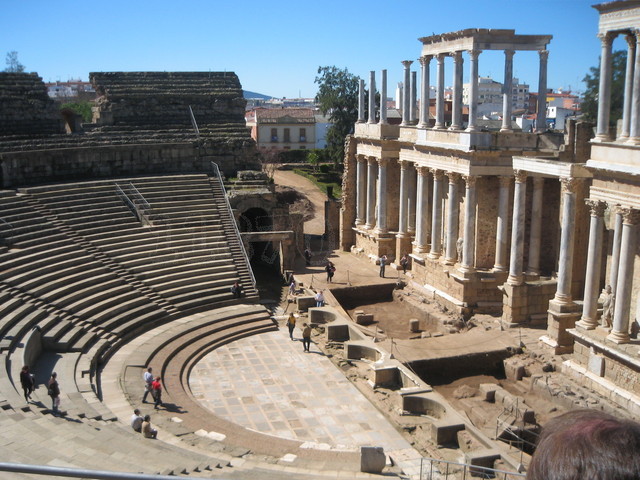
Also from this period come the Doric, Ionic and Corinthian styles; can you tell them apart?
The Romans left us many public works, such as causeways, aqueducts and circuses.
Do you know the aqueduct in Segovia?
Aqueduct in Segovia
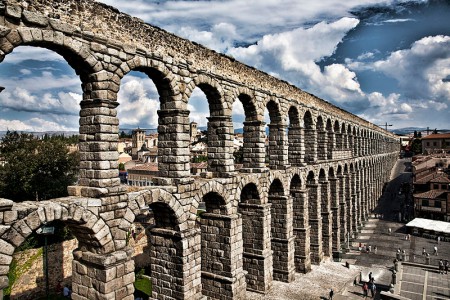
#2. THE VISIGOTH PERIOD
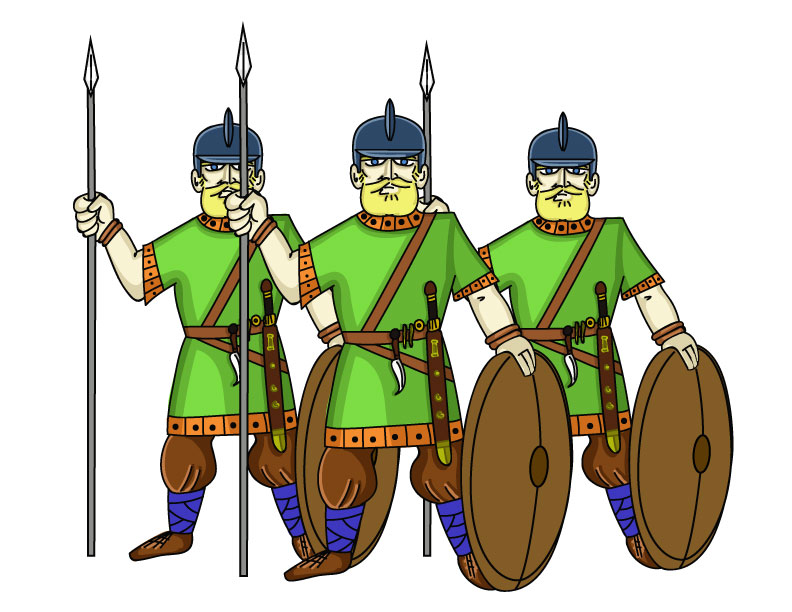
The Visigoths were influenced by Roman culture and built churches using horseshoe arches, as well as columns and pillars as support.
Church with horseshoe arch
They also used Corinthian capitals, simpler than the Roman ones, and images of animals and vegetation as decoration.
Corinthian capitals

A good example of this is the church of San Juan de Baños in Palencia.
Church of San Juan de Baños in Palencia

#3. THE HISPANO-MUSLIM PERIOD

The Muslim presence in Spain brought a new style of art which enriched our heritage. In the Mosques and palaces, chapiters inspired by the classical style are common, although they are more stylized and refined. The interior decoration is very rich, with many horseshoe or lobed arches, wooden ceilings and domes, and walls with script in Arabic and passages from the Koran.
Horseshoe arch

A perfect example can be found in Granada; do you know which monument we mean? The Alhambra of course.
The court of the lions
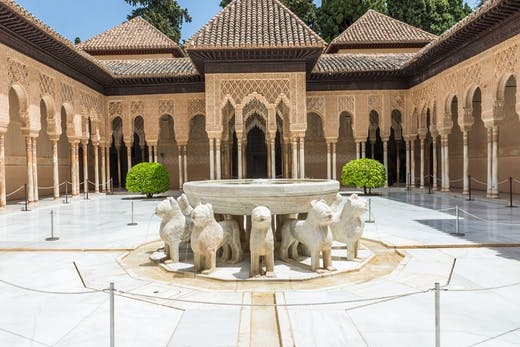
#4. THE ROMANESQUE PERIOD
Centred mainly on monasteries and churches for pilgrimage purposes, Romanesque art is characterized by its sobriety and meditative atmosphere

with low lighting, robust walls and pillars and very small windows. Half point arches and barrel vaults are also common.
Church with Latin cross
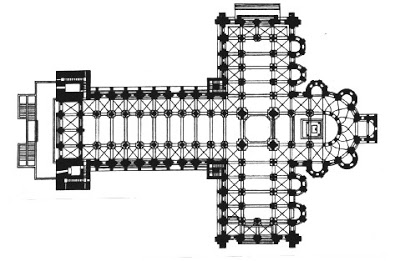
In the churches we can find all the artistic elements, from painting to architecture and sculpture; an example is the Pantócrator found in the church of San Clemente of Tahull in Lérida.
Pantócrator in the church of San Clemente de Tahull in Lérida.

In Spain there are a number of examples of Romanesque churches, mainly in the north. One of the most representative is the cloister of Santo Domingo de Silos in the province of Burgos.
The cloister of Santo Domingo de Silos
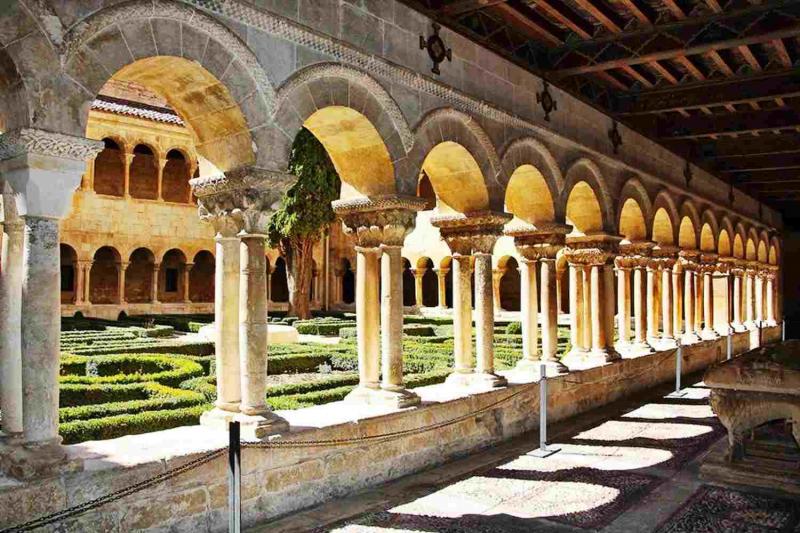
#5. GOTHIC PERIOD
With the advance of the Middle Ages, the Cathedral became the most important building in the city.

Gothic architecture is more vertical and luminous as a symbol of heavenly ascension.
Interior of the cathedral
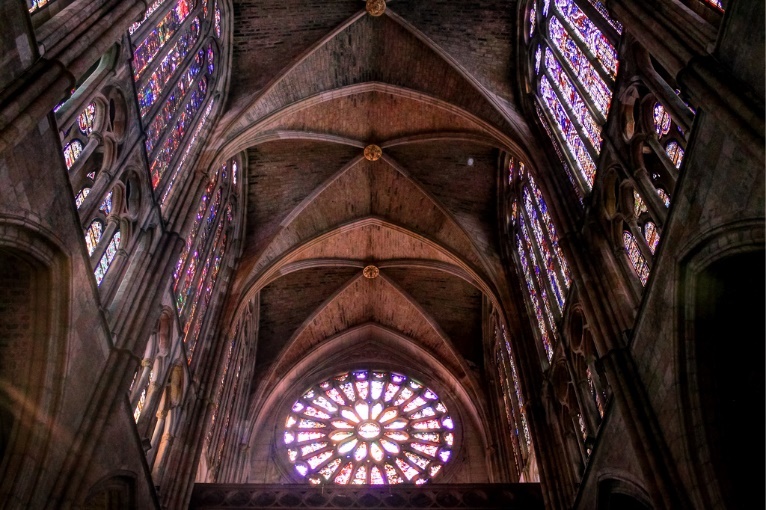
The windows are bigger and use rosettes and coloured glass to light up the interior of the cathedrals.
Gothic is one of the easiest styles to identify; just look at the arches and windows. One of the best examples of gothic architecture in Spain is the cathedral of León, known as the ‘Pulchra Leonina’.
Cathedral of León

#6. THE RENAISSANCE PERIOD
The Renaissance started in Italy in the XIVth century with the boom of humanism and classicism. A famous exponent of this art was El Greco, with his painting The Nobleman With His Hand On His Chest, which represents the classic criteria of balance and symmetry.
El Greco

Renaissance architecture goes back to the elements of classic art. In Spain there are many renaissance buildings, such as palaces, churches and monasteries.
Two of the best examples are the monastery of El Escorial in Madrid and the palace of the Infantado of Guadalajara.
El Escorial in Madrid
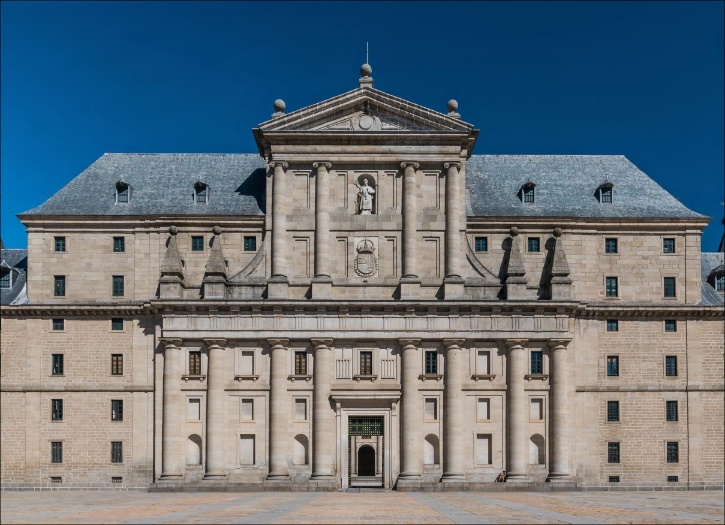
The palace of the Infantado of Guadalajara.
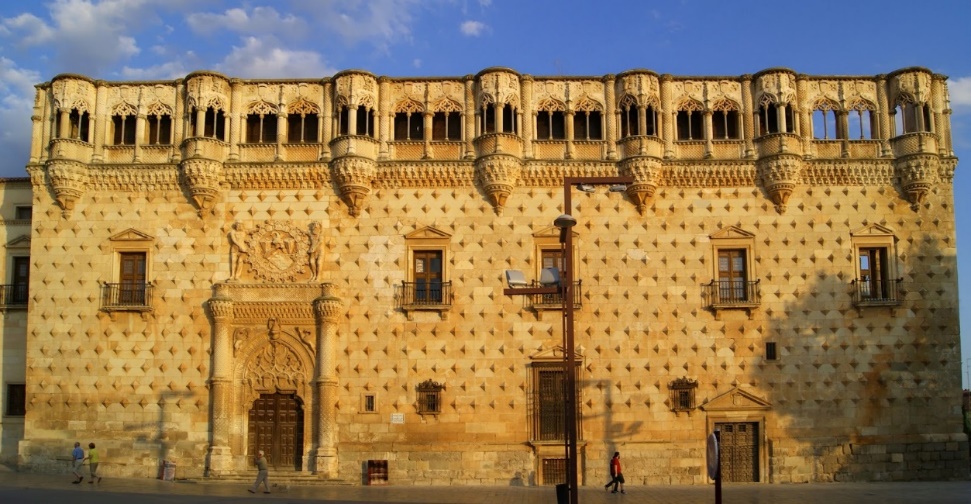
#7. THE BAROQUE PERIOD

During the Baroque period, art became a propaganda tool which broke away from balance and proportion to become monumental and full of visual impact, as can be seen in the altarpiece of the cathedral of Segovia of Churriguera,
Retablo de la catedral de Segovia de Churriguera

although elements of Classical and Renaissance art are still evident.
Another good example is to be found in the church of San Luis de los Franceses in Seville.
Iglesia de San Luis de los Franceses

#8. NEOCLASSICISM

With the Enlightenment, Greco-Roman balance returned in a simple and serene way.
There is a clear move away from the urge for decoration and the ideal of classic beauty is pursued. Neoclassical architecture is not as creative as Renaissance and often simply imitates Classical art. If you live in Madrid you will find numerous buildings in this style; notice the similarity between the Houses of Parliament and the Prado Museum.
Congreso de los Diputados (Madrid)
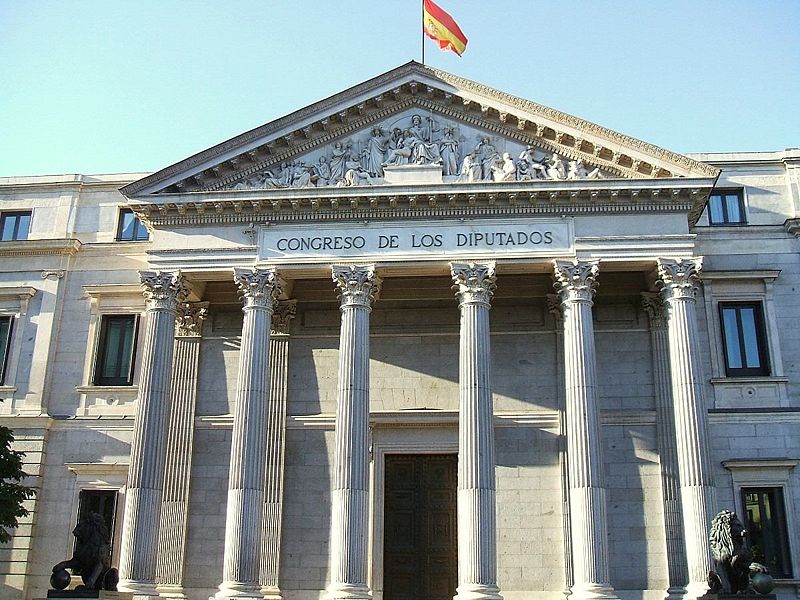
Museo del Prado
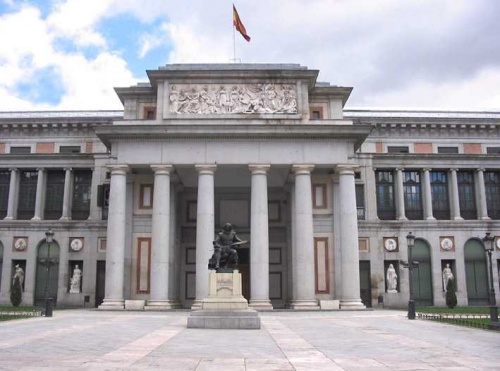
#9. MODERNISM
Modernist architecture tries to break away from the past in order to create a never -before- seen art movement. It imitates nature and uses vegetation and waves as its inspiration.
La Casa Batlló de Antonio Gaudí
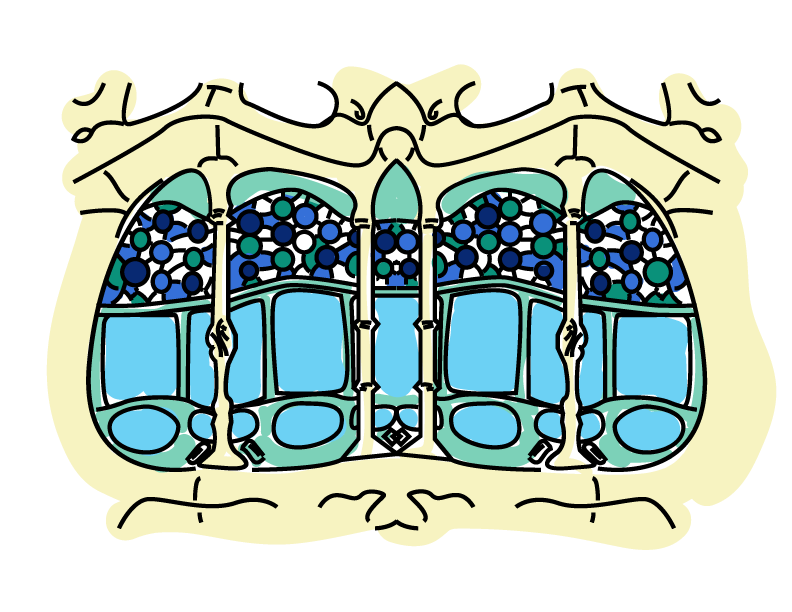
It could almost be said that architecture and sculpture come together in modernism. Symmetry is abandoned and decoration and sets of colours abound and the imagination runs wild. In Barcelona, the city of Modernism, we can find several examples of this style, the Sagrada Familia and the Batlló house, both by Gaudi, being the most famous examples.
Templo Expiatorio de la Sagrada Familia
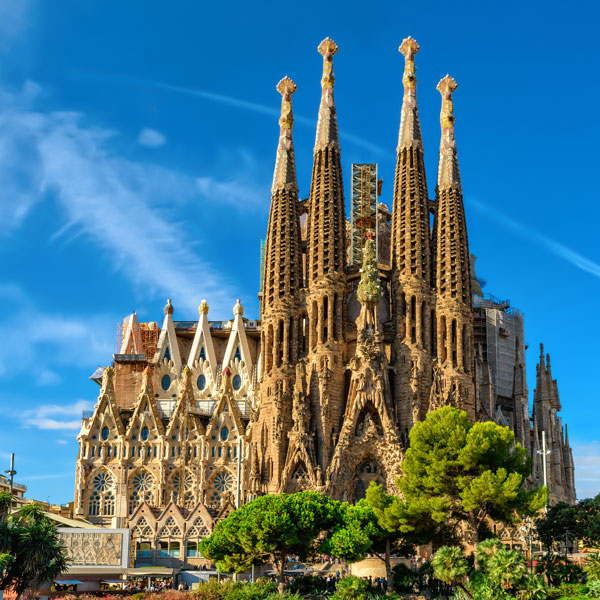
Fachada de la Casa Batlló de Antonio Gaudí
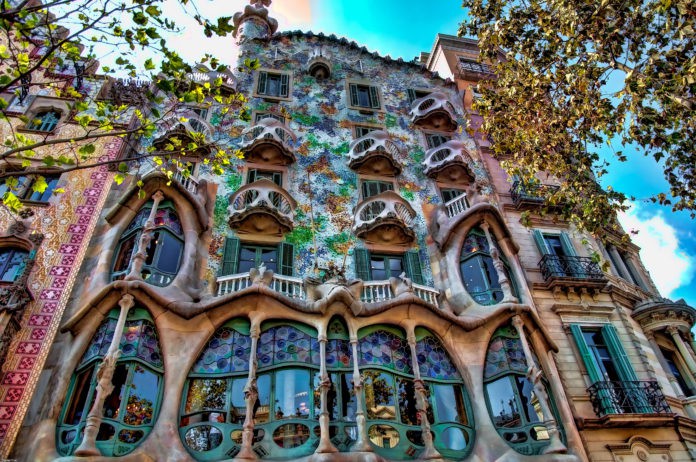
#10. THE PRESENT DAY

In this period, the most emblematic buildings are skyscrapers, the headquarters of big companies. The evolution of these buildings can be followed in Madrid by comparing the Torre España, made from bricks, with the Four Towers, made from steel and glass, an authentic challenge to nature.
La torre España de Madrid
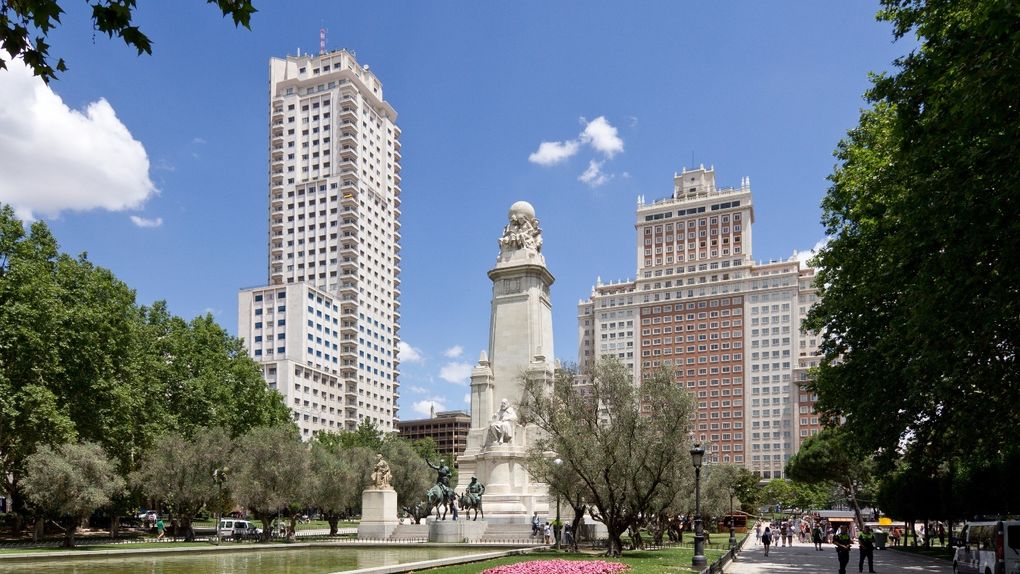
Las Cuatro Torres
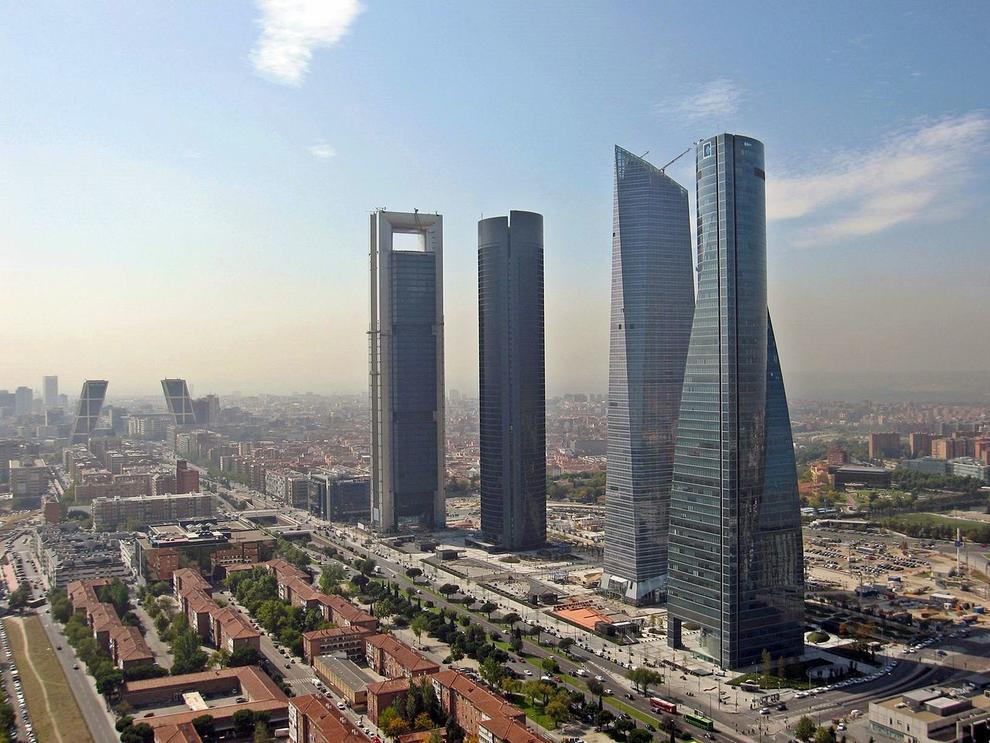
BANK NOTES AND ART
Now we want to propose a challenge.
Have you noticed that on the bank notes there are different architectural elements that correspond to the different periods that we’ve mentioned above?
Here you can see 5, 10, 20, 100 and 500 Euro notes. Would you know how to recognise the period on each note?
To check your knowledge, you can find the answers at:
www.historyofspain.es/art

